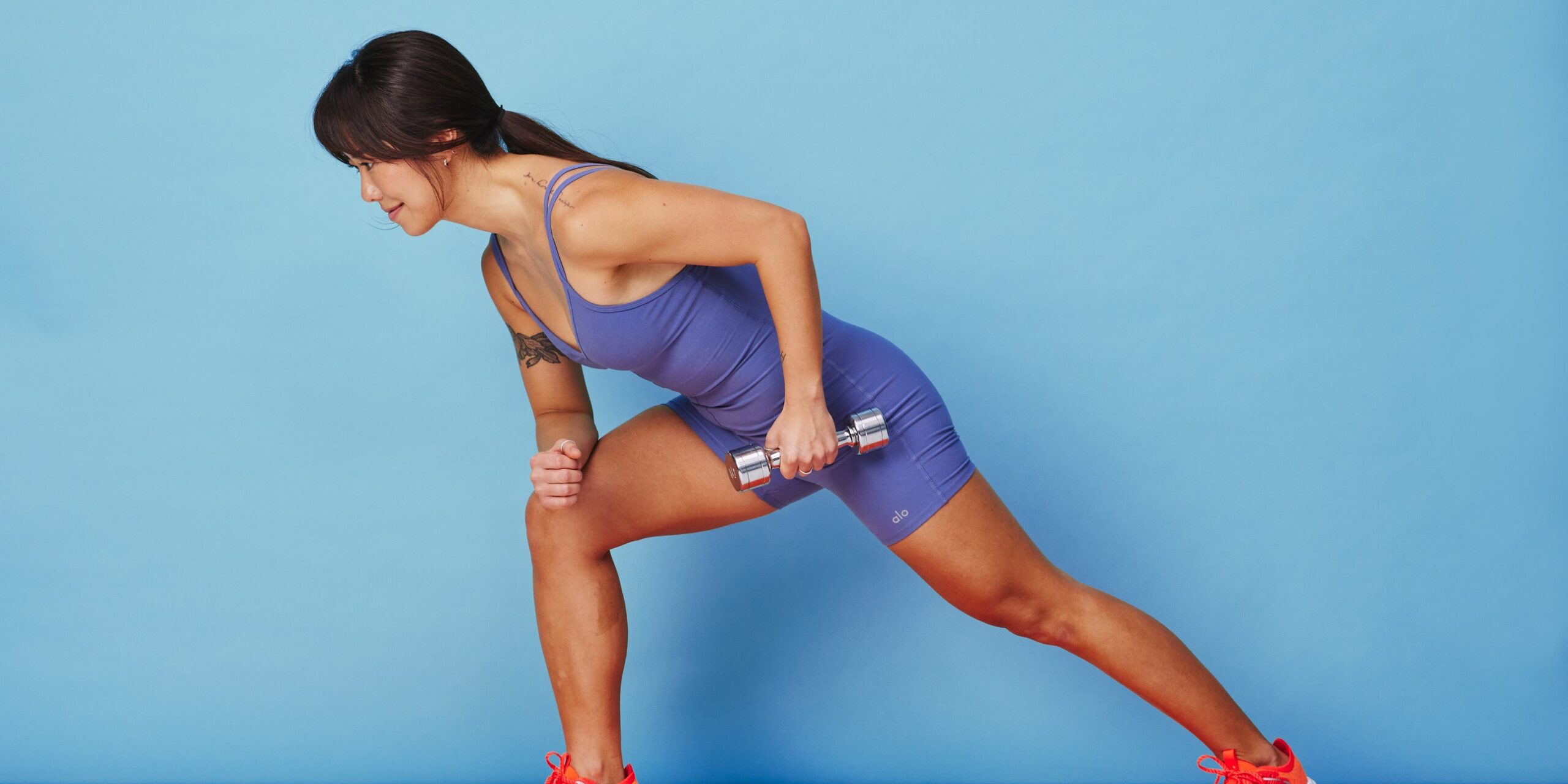A back and biceps workout with dumbbells isn’t just a great way to add in some upper-body work to your strength training routine—it can also bring on some serious benefits outside of the gym, too.
That’s because a lot of us spend a ton of time sitting, whether we’re hunched over a desk at work or scrolling through our smartphones after. And the resulting poor posture can lead to a host of issues: When your shoulders roll forward, your upper back muscles—particularly your rhomboids, mid and lower trapezius, and deep cervical flexors, plus a few others—lengthen, while your chest or pectoral muscles shorten, certified personal trainer Alicia Jamison, MA, a coach at Bodyspace Fitness and lecturer of exercise physiology at Brooklyn College, tells SELF. This can lead to tightness in the front of your body, and weakness around your upper back, she says. Ultimately, it can set the stage for muscle imbalances, which can up your risk of injury and lead to general discomfort—think low back pain and achy knees and hips, explains Jamison.
That’s why adding pulling exercises into your workout routine is so crucial: They help engage and strengthen your backside muscles. This is important, because strong back muscles can combat the forward-slouching position by literally pulling your head and shoulders into the better-aligned positioning.
And there are a whole bunch of options out there, regardless of what kind of equipment you have at your disposal. If you don’t have access to dumbbells, barbells, or kettlebells, bodyweight exercises like pull-ups, chin-ups, or inverted rows are great pulling options. Doing a home workout and have some free weights? Pullovers or row variations (say, like the bent-over row and renegade row) work that same movement. And if you’re at the gym, specific machines like the lat pull down or cable system can help diversify your routine.
READ RELATED: My boyfriend is instantly aroused – and climaxes without touching me
The pulling motion really works your back muscles, but your arms—especially your biceps (officially called your biceps brachii)—get in on the action, too: “Anything that requires you to flex your elbow requires your biceps to activate,” explains Jamison. In fact, depending on the grip you choose—if you go narrower rather than wider—you may actually hit your arms more than the bigger muscles in your back. So to be able to effectively execute pulling moves, you’ll want your biceps muscles as strong as possible, which is why it doesn’t hurt to show these upper-arm muscles some specialized love.
With that in mind, Jamison created a five-move dumbbell workout that can strengthen your upper back and biceps, while also engaging key muscles that can help you stand (or sit) up straight. For instance, the mid and lower traps, deltoids, serratus anterior, and rotator cuff muscles all play a role in helping you maintain optimal positioning.
Before diving into this routine, do a warm-up first to loosen tight areas and activate your muscles, focusing on your chest and back. You can try moves like the pec doorway stretch, T-spine extensions, and banded pull-aparts.





